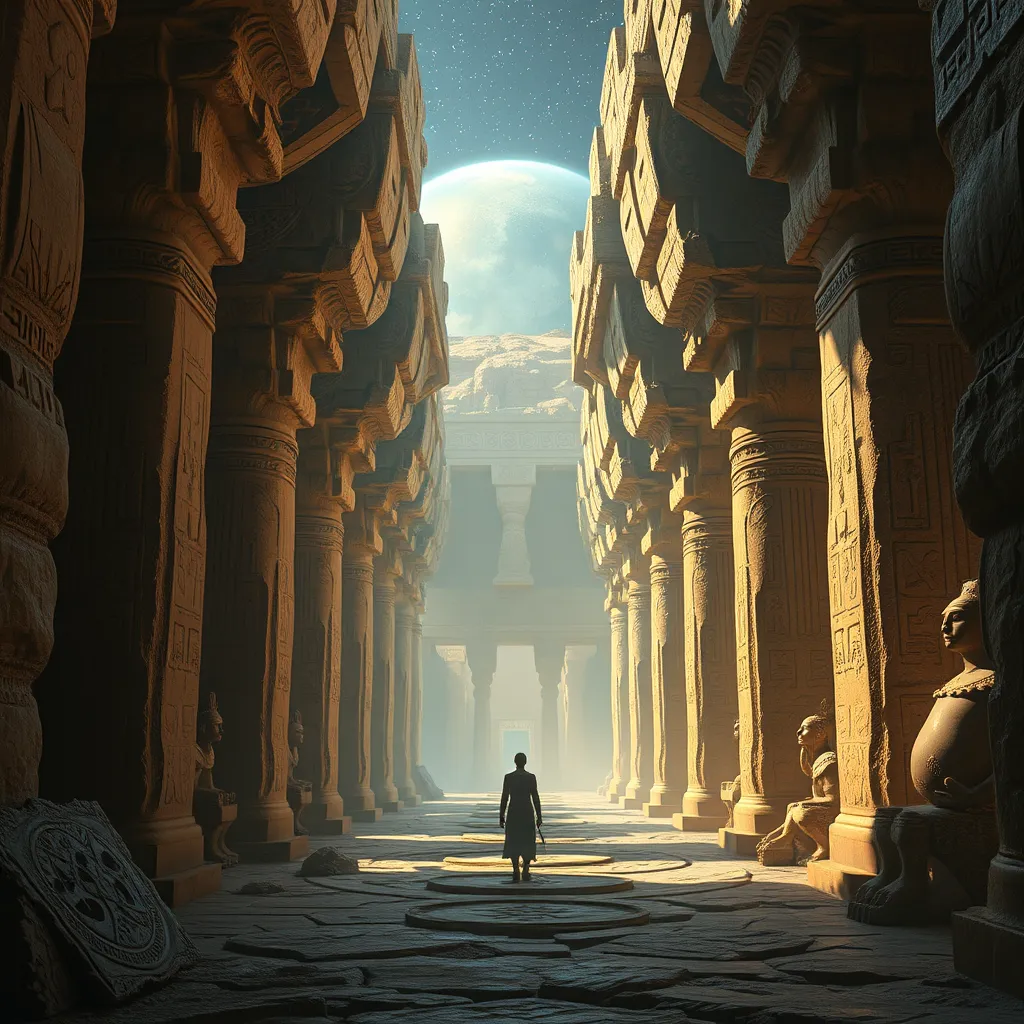The Duat: A Journey Through Time and Space
I. Introduction to the Duat
The Duat, a term that resonates deeply within the tapestry of ancient Egyptian mythology, refers to the realm of the dead. It is not merely a place but a complex landscape that embodies the beliefs, fears, and hopes of a civilization that revered the afterlife. The Duat is significant for its intricate depiction of the journey one must undertake after death, reflecting the Egyptians’ profound understanding of life and the hereafter.
In ancient Egyptian culture, the afterlife was seen as a continuation of life on earth, where the soul would traverse the Duat to reach eternal existence. The belief in an afterlife shaped not only their funerary practices but also their daily lives, influencing art, architecture, and social structures.
II. Historical Context of the Duat
The origins of the Duat can be traced back to the early dynastic period of ancient Egypt, where it was first conceptualized in the Pyramid Texts. These texts, inscribed in the tombs of pharaohs, often depicted the Duat as a mystical place filled with gods and challenges. Over time, the understanding and imagery of the Duat evolved, reflecting the changes in religious beliefs and practices throughout Egypt’s dynasties.
During the Middle Kingdom, the Duat began to take on more defined characteristics, with texts like the Coffin Texts elaborating on the journey of the deceased. By the New Kingdom, the Duat became a well-defined realm featuring various trials and tribulations that the soul must face before achieving eternal life. The evolution of the Duat illustrates the dynamic nature of Egyptian spirituality and its adaptation over centuries.
III. The Geography of the Duat
The Duat is often depicted as a vast and intricate landscape, consisting of various realms and challenges that the deceased must navigate. Key features of the Duat include:
- The Waters of Chaos: Representing the primordial state before creation, these waters are a barrier the soul must cross.
- The Hall of Judgment: A central location where the heart of the deceased is weighed against the feather of Ma’at, symbolizing truth and justice.
- The Fields of Iaru: Often depicted as a paradise where the worthy souls reside after passing the trials of the Duat.
Each landscape within the Duat is rich in symbolism, representing different aspects of the soul’s journey. The waters symbolize the unknown and chaos, while the Hall of Judgment embodies the moral and ethical considerations of one’s life.
IV. The Journey Through the Duat
The journey through the Duat is fraught with challenges and trials. Upon death, the soul embarks on a quest that involves navigating various realms, facing demons, and overcoming obstacles. Key stages in this journey include:
- Encountering the Guardians: The deceased must confront deities and guardians like Anubis, who oversees the weighing of the heart.
- The Weighing of the Heart: The heart, representing one’s deeds in life, is weighed against the feather of Ma’at. A lighter heart signifies worthiness.
- Facing the Underworld Creatures: Souls must navigate past various creatures and entities that can hinder their progress.
Throughout this journey, important deities such as Osiris, the god of the afterlife, and Thoth, the god of wisdom, play pivotal roles in guiding and assisting the deceased.
V. The Role of the Dead in the Duat
Funerary practices were paramount in ancient Egyptian society, as they prepared the deceased for their journey through the Duat. Rituals included:
- Embalming and mummification to preserve the body for eternity.
- Burial with grave goods to assist the soul in the afterlife.
- Recitation of spells and prayers to protect and guide the deceased through the Duat.
The “Book of the Dead,” a collection of spells, illustrations, and texts, served as a critical guide for the dead. It provided the necessary knowledge and tools to navigate the Duat and ensure a successful transition to the afterlife.
VI. The Duat in Art and Literature
The Duat has been immortalized in ancient Egyptian art, where its landscapes and deities are vividly depicted. Tomb paintings often illustrated scenes from the afterlife journey, showcasing the trials faced by the deceased and the divine assistance received.
Literary sources, including the Pyramid Texts and the Coffin Texts, offer insights into the beliefs surrounding the Duat. These texts have significantly impacted our understanding of ancient Egyptian spirituality and the complexities of their afterlife beliefs.
VII. Modern Interpretations of the Duat
The Duat continues to influence contemporary literature and media, often serving as a backdrop for themes of death, resurrection, and the afterlife. Modern interpretations can be found in:
- Books and novels that explore themes of ancient mythology.
- Films and television shows that draw upon Egyptian mythology for storytelling.
- Art and exhibitions that reflect on the significance of the Duat in modern spirituality.
In the realm of mythology studies, the Duat remains relevant, offering insights into human beliefs about life after death and the moral implications of our actions.
VIII. Conclusion
The Duat, a profound and multi-faceted concept in ancient Egyptian mythology, encapsulates the civilization’s understanding of life, death, and the afterlife. Its significance resonates through time, providing a lens through which we can explore the complexities of human spirituality and morality.
As we reflect on the enduring legacy of the Duat, we recognize its impact on both ancient beliefs and modern interpretations, affirming that the quest for understanding the afterlife is a universal aspect of the human experience.




